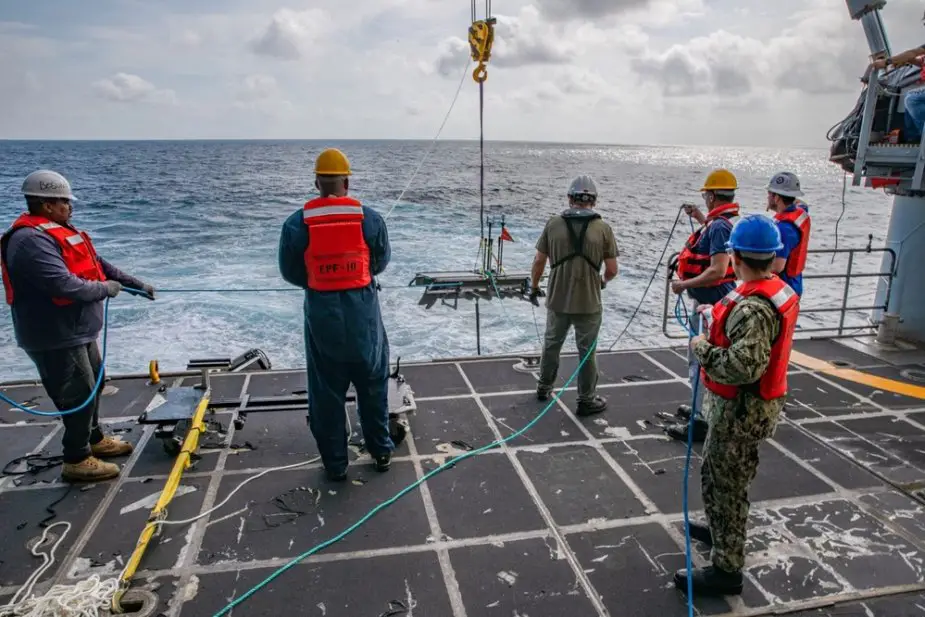Breaking news
US Navy successfully launches Wave Glider USV from USNS Burlington.
According to information published by the US DoD on July 11, 2023, U.S. Navy Sailors joined forces with Military Sealift Command civilian mariners and civilian contractors to launch the Wave Glider unmanned surface vehicle (USV) from the Spearhead class expeditionary fast transport ship USNS Burlington (T-EPF 10).
Follow Navy Recognition on Google News at this link
 Wave Glider USV from the Spearhead class expeditionary fast transport USNS Burlington. (Picture source: US DoD)
Wave Glider USV from the Spearhead class expeditionary fast transport USNS Burlington. (Picture source: US DoD)
The groundbreaking launch was executed while the USNS Burlington journeyed towards Cartagena, Colombia, preparing for UNITAS LXIV. Colombia is the honored host of this year's UNITAS, the world's longest-standing annual multinational maritime exercise, set to commence on July 11, 2023.
As part of the U.S. Naval Forces Southern Command/U.S. 4th Fleet (USNAVSOUTH/FOURTHFLT) Unmanned Integration Campaign, the Wave Glider is one of the key unmanned systems deployed during the exercise.
The central aim of this campaign is to adopt and integrate unmanned systems and artificial intelligence instruments into naval operations, thereby fortifying the Navy’s Marine Domain Awareness (MDA), bolstering counter-narcotics initiatives, and improving information sharing with allied nations.
Powered by the force of waves, the Wave Glider USV utilizes vertical wave motion to propel itself forward. Throughout UNITAS LXIV, this USV will be instrumental in enhancing Maritime Domain Awareness (MDA) during the exercise's underway portions.
The overarching goal of the USNAVSOUTH/FOURTHFLT Unmanned Integration Campaign is to advance unmanned platforms to fleet level and refine tactics, techniques, and procedures, thereby paving the way for the U.S. Navy’s Hybrid Fleet of the 2030s.
USV
The Wave Glider is an autonomous, solar and wave-powered unmanned surface vehicle (USV) that collects marine data. It can operate individually or in fleets, processing large data sets in real time and delivering data for up to a year without needing fuel.
The modular design allows easy sensor integration and fleet coordination. The Wave Glider has proven endurance in challenging weather and sea conditions, making it a cost-effective solution for long-duration missions.
It can maintain a mission duration of up to a year, operate in water depths greater than 15m, and maintain a station-keeping radius of 30m. With a typical speed of 1.3 knots, it has a towing capability of 500 kg, depending on the drag.
The continuous power ranges from 5W to 20W, with maximum solar collection at a nominal 192W. The battery capacity ranges from 0.9 kWh to 6.8 kWh, which is rechargeable. Communication is facilitated through cellular networks, satellite, and Wi-Fi.























